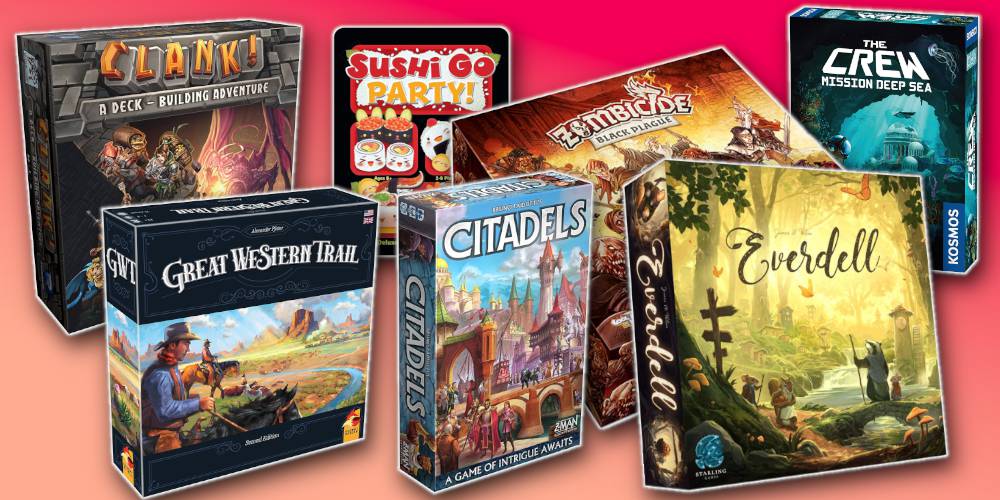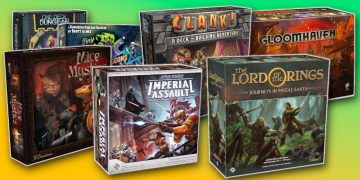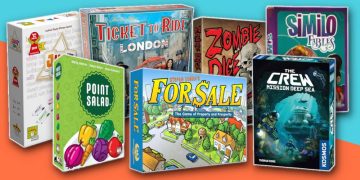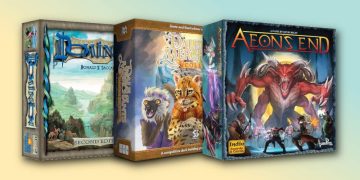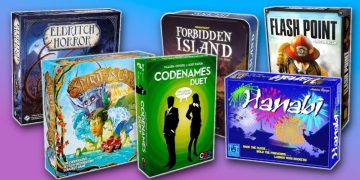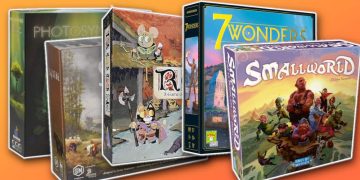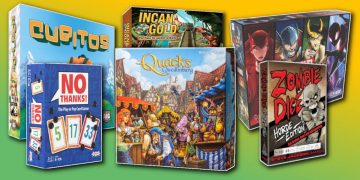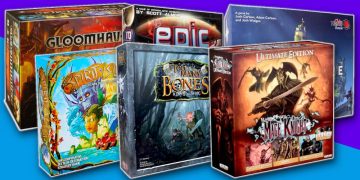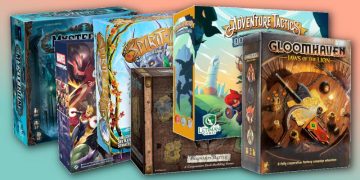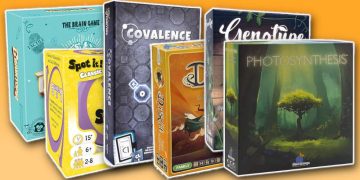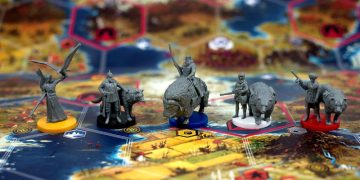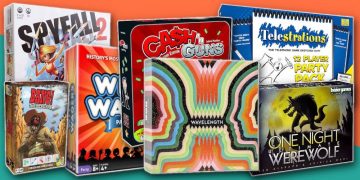If you ask me, the sweet spot for a board gaming group is between 4 to 5 players. Sadly, it can be hard—even for a group that size—to meet up regularly for weekly or monthly sessions.
And so, most of the time, I find myself in a group of three. But I don't consider that to be a bad thing, especially because there are so many great board games that are great for three players.
In fact, many popular board games actually offer the best experience with just three players, even if they support larger counts.
If you're like me and your gaming group is primarily a trio, here are the best board games for three players that you need in your collection.
13. Minotaur
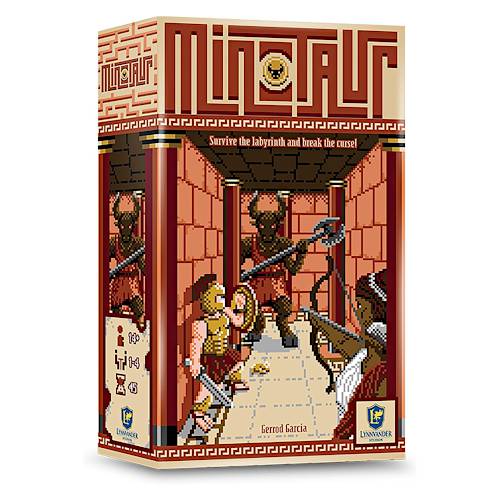
Minotaur is a somewhat lightweight cooperative board game that's perfect as an introduction to the dungeon crawler genre.
You all assume the role of a special hero class with unique abilities, and you're all stuck in the Minotaur's Labyrinth.
Work together to fight off baddies, disarm hazards, and seek out the shattered Medallion pieces which are needed to seal away the Minotaur and open up an exit for your party.
Minotaur plays a bit like a puzzle game, but stands out for its map system that's constantly changing as you move around. The deeper you go, the more you'll find—but the Minotaur will get stronger.
12. Sushi Roll
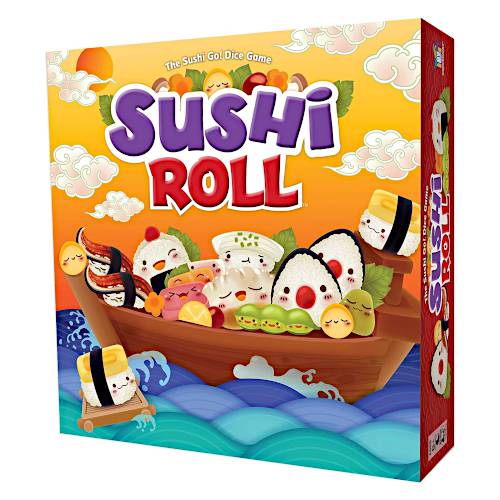
The original Sushi Go! is a fast-paced game that emulates the experience of conveyor belt sushi: players start with a hand of sushi cards, pick one card to keep, then pass their hand to the left. Rinse and repeat.
Six years later, the same designer came out with Sushi Roll, which plays similarly but involves a tray of dice instead of a hand of cards. (Not to be confused with a different game called Sushi Dice.)
Players roll their dice and pick which one die roll they want to keep, then pass their remaining dice to the left. Based on which dice rolls you collect, you'll score points. Some combinations score higher, but they're riskier to achieve—and some can even leave you busted with no points.
Sushi Roll is a super lightweight game that's great as a warmup, a cooldown, a filler, or a gateway board game for those new to the hobby.
11. Love Letter
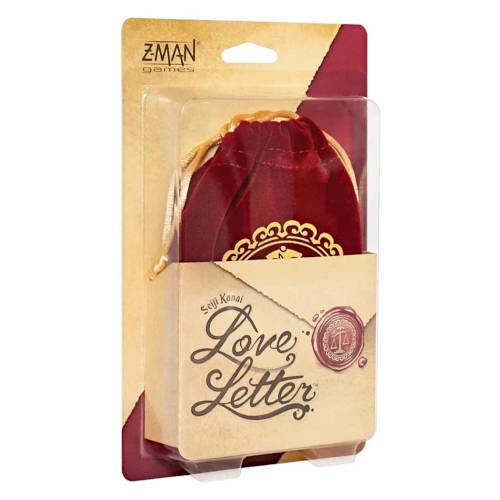
Love Letter is one of the simplest board games you'll ever play, but it packs a surprising amount of strategy, depth, and replayability.
Every round, the goal is to remain in the game (i.e. don't get knocked out) and survive with the highest value card amongst all remaining players.
Each player starts with one card in hand. On your turn, you draw one card and then play one card—either the one you were holding or the one you just drew. Each card has a rank value, but also a special ability!
These special abilities let you do things like peek at someone's card, force trade cards, force discard cards, or even compare cards and knock out the one whose card is a lower value.
Love Letter is a game of deduction and it plays amazingly well with 3 players, which strikes the right balance between luck, information, and risk. And since it's so portable, you can play it anywhere.
10. Citadels
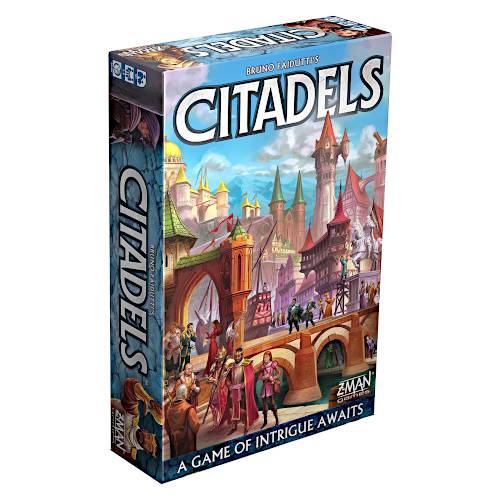
Citadels is a card drafting game that centers on a deck of eight character cards ranked in order from 1 to 8. Each character has a specific action: Thief steals gold, Assassin nullifies another character, etc.
Every round, the character deck is passed around and players draft which character they want for the round. Then, in order from 1 to 8, players reveal their character and do their action.
Citadels may seem like a game for larger groups, but it actually plays best with 3 players. The trick is to incorporate a rank 9 character—available in the Revised Edition—and have each player draft two characters.
This simple tweak introduces lots more strategic depth, as players now have more information and can act twice per round, and it makes Citadels one of the greatest three-player board games.
9. Dominion
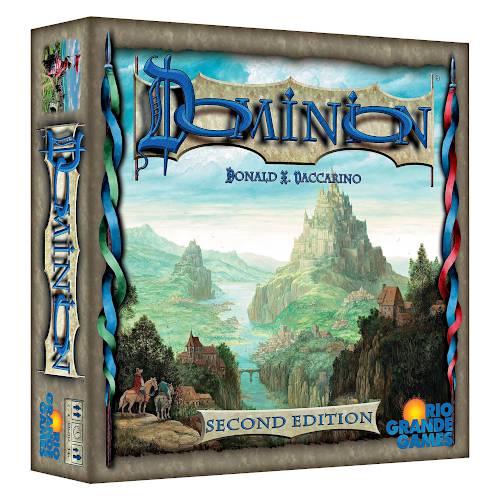
Not only was Dominion the very first deckbuilding game, it remains one of the best deckbuilders to this day. Just because it's been a few years since its release doesn't mean it's suddenly bad!
Every player starts with the same basic deck of actions. Then, on every turn, you draw a hand and play your cards to acquire new cards that get added to your deck—hence, deckbuilding.
The strategy is in managing your deck size, building synergies between the cards you acquire, and pacing your victory point purchases so that you come out ahead without bogging down your deck's performance.
Between all the cards in the base set plus all the cards in the 14 expansions (as of this writing), there's just so much variety and replayability. And even now, new Dominion expansions are still being produced that twist the game in interesting ways!
8. Marvel Zombies: Heroes' Resistance
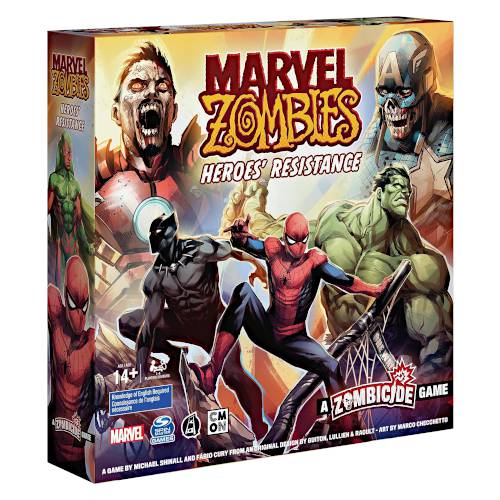
Designed by Fabio Cury and Michael Shinall
Supports 1 to 4 players
About 60 to 90 minutes
Marvel Zombies: Heroes' Resistance is the latest and best entry in the Zombicide series of survival board games that combine zombie apocalypses with various themes. In this case, Marvel superheroes!
In this cooperative game, you all play as a Marvel hero and must work together to take down the zombie invasion across numerous missions. Each mission has its own victory and loss conditions, and you'll find loot, equip items, and fight baddies along the way.
Not only is the ruleset of Marvel Zombies: Heroes' Resistance far improved compared to previous Zombicide games, but the price point is far more affordable as well.
Marvel Zombies: Heroes' Resistance is a must-buy if your board gaming trio is seeking a midweight cooperative board game with satisfying session lengths and plenty of content to digest.
7. Inis
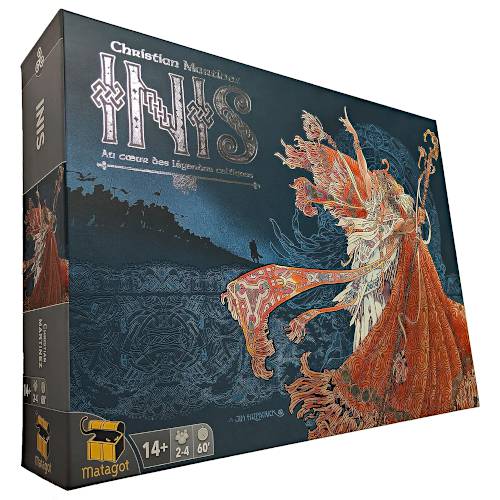
Inis (pronounced "in-ish") is a fantastic action drafting game where you play as Celtic clans vying for limited territory to see who can emerge as King of the Island, done via one of three victory conditions.
There's heavy emphasis on card drafting and hand management in Inis, tempered by other card types that add extra dimensionality.
The great thing about Inis is that this isn't a game about eliminating your opponents, as you need the other clans to succeed in order for your clan to succeed—but you still need to keep them in check!
In a way, kingmaking is built into the design of Inis, but there's also always a way for any player to win due to the varied victory conditions. All combined, it makes for a fascinating three-player game.
6. Clank! Catacombs
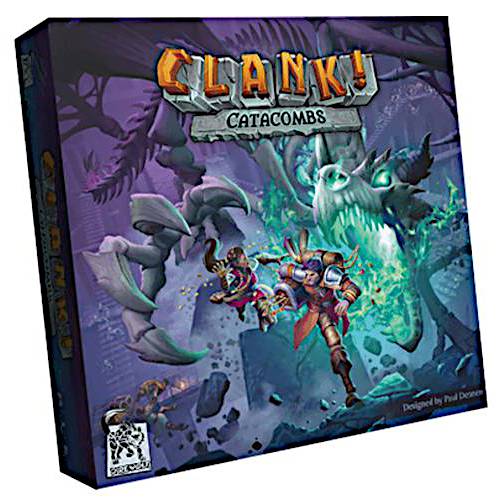
Clank! Catacombs is a fun and hectic deckbuilding game about delving into a dragon's lair, navigating tiles, stealing valuable artifacts, and escaping before the enraged dragon can kill you.
Unlike the original Clank!, this version has a modular board where random tiles are drawn and added whenever you reach the edge. This brings a level of unpredictability that ramps up the risk-versus-reward, forcing you to push your luck as you venture into danger.
You're all competing against each other to be the best thief, but the competition is indirect. In fact, early on, you might even help each other. That cooperative/competitive balance makes this great for trios.
Clank! Catacombs is moderately lightweight, easy to set up, and plays well. It's a solid inclusion for any board games collection, and it's also great as a two-player game if one of your trio flakes out!
5. The Isle of Cats
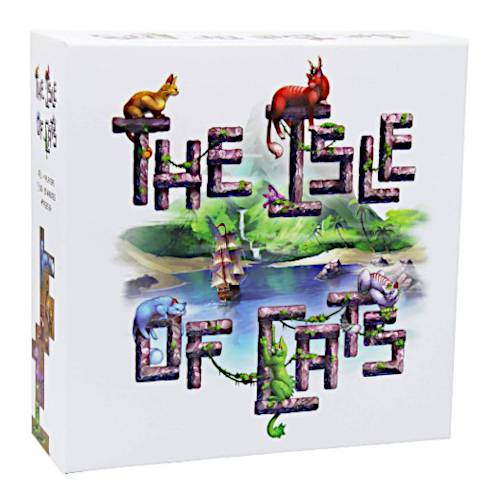
The Isle of Cats is a fun tile placement game where your goal is to rescue as many island cats as you can—but it won't be easy because each cat is shaped differently and you only have so much space on your boat.
There's more to it than that, of course, like how the boat is divided into separate rooms that you need to fill, plus the rats around the ship that you need to cover up using your cat tiles.
The best thing about The Isle of Cats is that, while it plays best with three players, it's also really good when played with two or solo. Plus, the cat theme is just adorable.
Note: The Isle of Cats can be played two ways: the "full" rules which involve card drafting, and the "family" rules which are more streamlined and focus more on the tile placement aspect.
I prefer the family rules. The added complexity of the full rules don't add much value, whereas the family rules are clean, refined, and, most importantly, fun!
4. The Crew: Mission Deep Sea
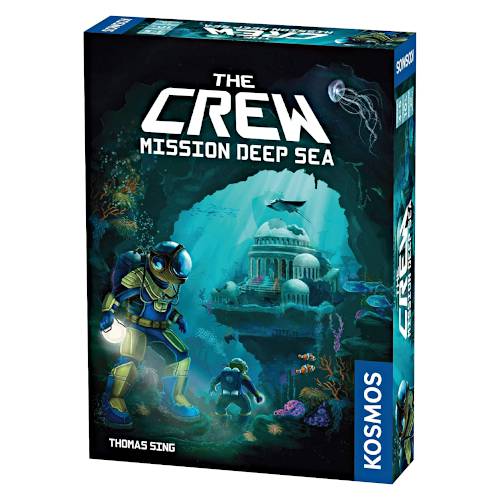
The Crew: Mission Deep Sea is a cooperative trick-taking card game where you all work together to collect tricks (as you would in games like Hearts, Spades, Euchre, Texas 42, etc).
What makes it more interesting than your usual trick-taking game is that every player has a task to fulfill in order for you to collectively win—or lose—the mission. A task might be: "I will win a trick using a 6." Another task might be: "I will not win any tricks."
Furthermore, players aren't allowed to communicate with each other except with a single communication token that gives a little information about their hand.
There are dozens of mission scenarios in the game's logbook, but you can also play without the logbook by dealing random tasks and then drafting them, one player at a time.
3. Wingspan
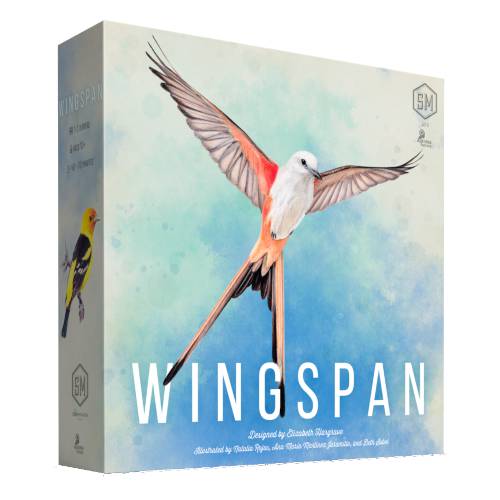
Wingspan is a gorgeous, relaxing, engine-building board game where you're all trying to create the most efficient aviary for points.
You do this by attracting different kinds of birds to your different habitats—forest, plains, wetlands—with each bird offering its own benefits. As your aviary grows larger, you get more resources to play with.
You'll also need to manage your birds via food and eggs, which will also impact your aviary's progress in various ways.
Wingspan doesn't have much player interaction, so you can think of it as a puzzle-like game with each player managing their own aviary puzzle. It's a great game to bust out for more chill sessions.
2. Everdell
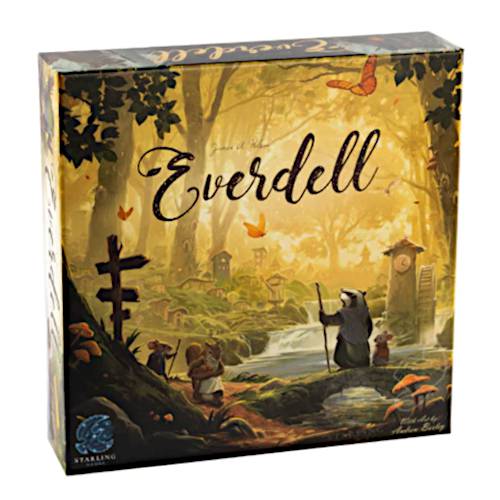
Everdell is a beautiful board game—seriously, the artwork is gorgeous—where you all play as woodland creatures trying to build up your own woodland city before the next winter arrives.
It's primarily a worker placement game, meaning you place tokens around the forest in order to acquire resources, which are then spent on building and improving your woodland city.
Everdell is a great game for any board gaming trio who wants a meaty experience that isn't overly complicated or intimidating. You might even get it for the delightful box art alone!
1. Great Western Trail
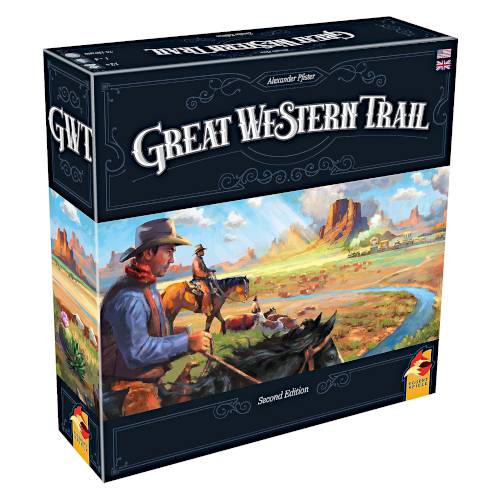
Great Western Trail is the heaviest board game on this list. There's a lot going on, and you should expect to commit a few hours for a full playthrough. It's perfect for a lazy weekend spent inside!
In Great Western Trail, you're all ranchers who are herding cattle from Texas to Kansas City. The tough part is making sure your cattle stay in good shape along that journey.
The gameplay involves building up a deck of cattle cards, collecting sets of cows and various workers, constructing buildings along the trail, and unlocking abilities that expand your capabilities.
For serious board gamers who have enough lightweight and midweight games and are looking to step into heavier territory, Great Western Trail is a solid option with lots of replayability.
